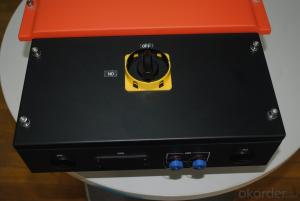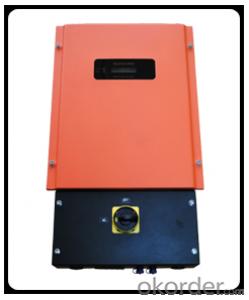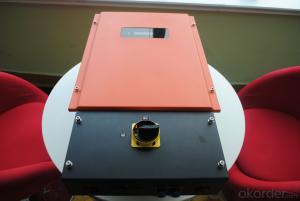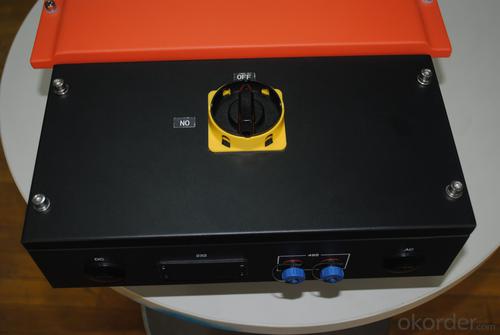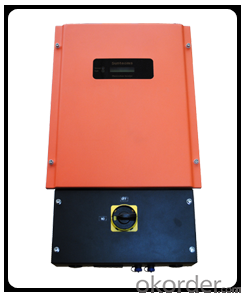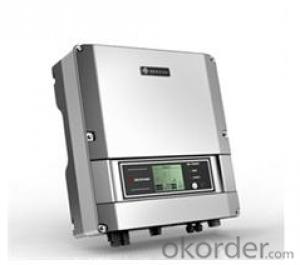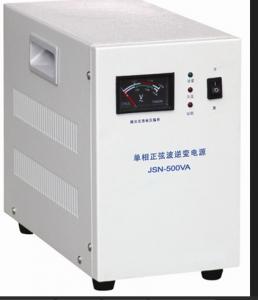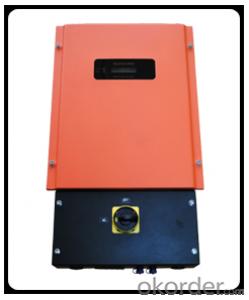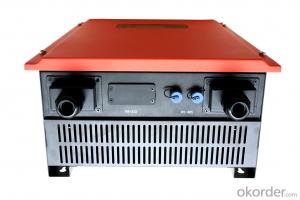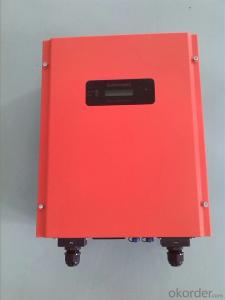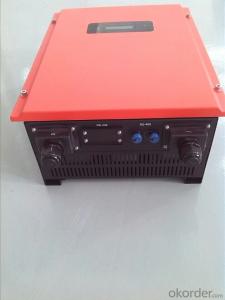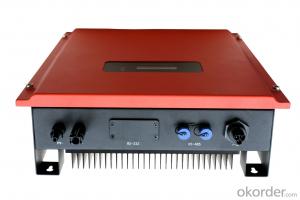3.6 Kw Solar Inverter Sunteams 4000-5000 (US) ETL with Wirebox
- Loading Port:
- Shanghai
- Payment Terms:
- TT OR LC
- Min Order Qty:
- 5 watt
- Supply Capability:
- 3000 watt/month
OKorder Service Pledge
OKorder Financial Service
You Might Also Like
The Sunteams (US) 1500 ~5000 series isapplicable to various rooftops and small scale photovoltaic grid connected power plants. Their nominal output powers are 1.5 kW, 2 kW, 2.5 kW, 3 kW, 4 kW and 5kW respectivelywith Certificate ETL (220V/60HZ).
This series is transformerless and has a wide range of MPPT input voltage. Itsmaximum conversion efficiency and MPPT tracking accuracy reach 97.6 % and 99.5% respectively. The maximum DC voltage reaches 550 V. Its multilingualLCD display facilitates easy operation. It has waterproof direct plug interminals. It has overvoltage, islanding, short circuit, overloading andoverheating protection functions. Its IP65 protection degree will ensure itruns well in various tough environments.
These units are available with wirebox (DC Switch).
UL certified
■ For countries with UL certification (UL 1741 / IEEE 1547)
Efficient
■ The CEC efficiency of the inverter can reach 95.0 %-97.5 %
■ Transformerless desi
Simple
■ ‘Plug and play’connection for easy installation and maintenance
■ Designed for hanging with simple and easy installation
■ Fanless cooling concept
Communicative
■ RS232/RS485 interfaces as standard
■ Optional Bluetooth technology
- Q: How do you choose the right voltage rating for a solar inverter?
- When choosing the right voltage rating for a solar inverter, it is important to consider the voltage of the solar panels and the electrical grid. The voltage rating of the inverter should match or be compatible with both of these sources. Additionally, factors such as the maximum power output of the solar panels and the electrical load should also be taken into account to ensure optimal performance and efficiency of the inverter.
- Q: Can a solar inverter be used with different types of grounding configurations?
- Yes, a solar inverter can be used with different types of grounding configurations. However, it is important to ensure that the grounding configuration of the inverter is compatible with the specific electrical system it is being connected to. It is recommended to consult the manufacturer's guidelines and local electrical codes to determine the appropriate grounding configuration for safe and efficient operation.
- Q: What is the typical installation process for a solar inverter?
- The typical installation process for a solar inverter involves several steps. Firstly, the location for the inverter needs to be determined, usually close to the solar panels and near the main electrical panel. The inverter is then mounted securely on a wall or other suitable surface. Next, the DC input wires from the solar panels are connected to the input terminals of the inverter. The AC output wires from the inverter are then connected to the main electrical panel. Finally, the inverter is connected to a monitoring system, if applicable, to track and manage the solar power generation. It is important to follow all safety guidelines and local electrical codes during the installation process.
- Q: How does a solar inverter handle variations in solar irradiation?
- A solar inverter handles variations in solar irradiation by continuously monitoring the amount of sunlight received from the solar panels. It adjusts its power output accordingly to convert the maximum available DC power from the panels into AC power for use in the electrical grid or home. This dynamic response ensures that the inverter optimizes energy production even during changing weather conditions or fluctuations in solar irradiation.
- Q: How does the voltage regulation affect the performance of a solar inverter?
- Voltage regulation plays a crucial role in the performance of a solar inverter. It ensures that the output voltage of the inverter remains stable and within an acceptable range, regardless of fluctuations in the input voltage. This stability is vital for the efficient operation of the inverter and the overall performance of the solar power system. Improper voltage regulation can lead to various issues such as increased power losses, reduced energy production, and potential damage to connected devices.
- Q: How does a solar inverter handle temperature variations?
- A solar inverter is designed to handle temperature variations by incorporating advanced thermal management systems. These systems ensure that the inverter operates within a specified temperature range, typically between -25 to 60 degrees Celsius. The inverter uses internal fans, heat sinks, and sometimes liquid cooling mechanisms to dissipate heat generated during operation. Additionally, the inverter may have temperature sensors that monitor the internal and external temperatures, allowing it to adjust its performance and efficiency accordingly. This temperature management enables the solar inverter to operate optimally and maintain its reliability even in extreme temperature conditions.
- Q: What is the role of a DC-DC converter in a solar inverter?
- The role of a DC-DC converter in a solar inverter is to convert the direct current (DC) power produced by the solar panels into the appropriate voltage and current levels required to feed into the alternating current (AC) grid. This conversion ensures efficient power transfer from the solar panels to the electrical grid, enabling the solar energy to be used for various applications or to be stored in batteries.
- Q: What is the maximum number of solar panels that can be connected to a single inverter?
- The maximum number of solar panels that can be connected to a single inverter depends on the specifications and capacity of the inverter. However, there is no fixed number as it varies depending on factors such as the size and wattage of the panels, the voltage and capacity of the inverter, and the overall system design. It is recommended to consult the manufacturer's guidelines or a professional installer to determine the maximum number of panels that can be connected to a specific inverter.
- Q: Are there any limitations on the angle of the solar panels when using a solar inverter?
- Yes, there are limitations on the angle of the solar panels when using a solar inverter. The optimal angle for solar panels is typically determined based on the geographical location and the season. Deviating too much from the recommended angle can result in decreased energy production.
- Q: How does a solar inverter handle excess power production?
- A solar inverter handles excess power production by converting the surplus energy generated by the solar panels into usable AC power. This excess power is either fed back into the grid or stored in batteries for later use, depending on the type of solar system setup.
Send your message to us
3.6 Kw Solar Inverter Sunteams 4000-5000 (US) ETL with Wirebox
- Loading Port:
- Shanghai
- Payment Terms:
- TT OR LC
- Min Order Qty:
- 5 watt
- Supply Capability:
- 3000 watt/month
OKorder Service Pledge
OKorder Financial Service
Similar products
Hot products
Hot Searches
Related keywords
